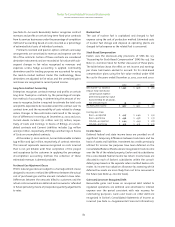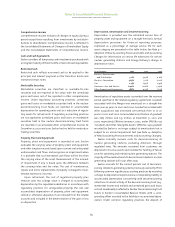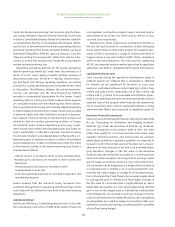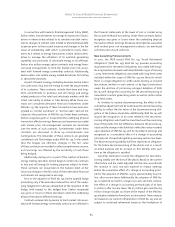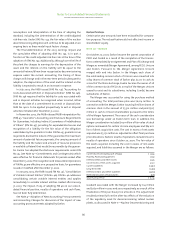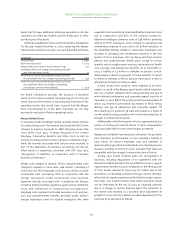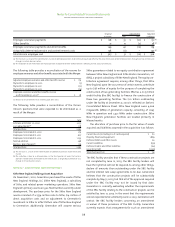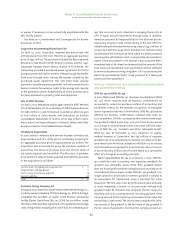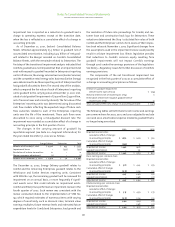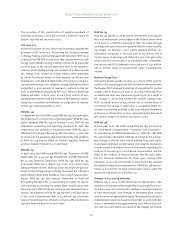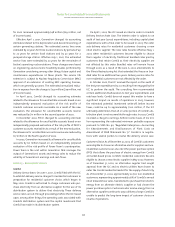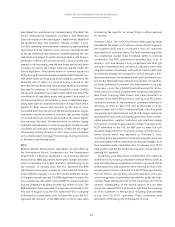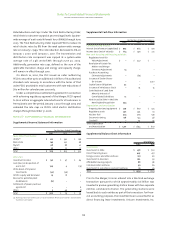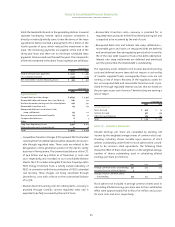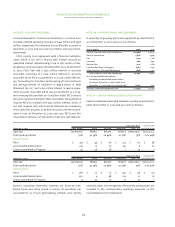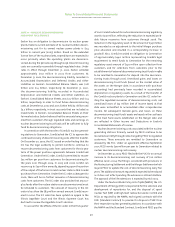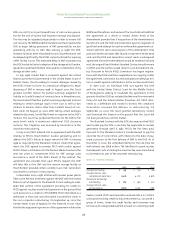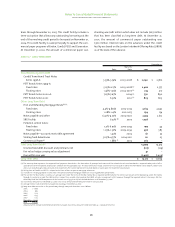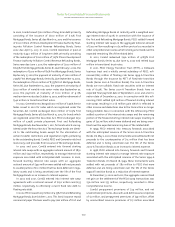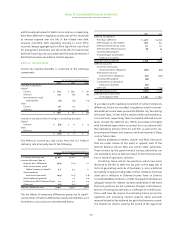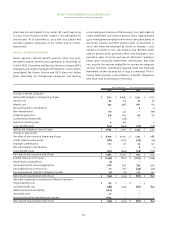ComEd 2002 Annual Report Download - page 94
Download and view the complete annual report
Please find page 94 of the 2002 ComEd annual report below. You can navigate through the pages in the report by either clicking on the pages listed below, or by using the keyword search tool below to find specific information within the annual report.
for 2002 increased approximately $48 million ($29 million, net
of income taxes).
Effective April 1, 2001, Generation changed its accounting
estimates related to the depreciation and decommissioning of
certain generating stations. The estimated service lives were
extended by 20 years for three nuclear stations,by periods of up
to 20 years for certain fossil stations and by 50 years for a
pumped storage station. Effective July 1, 2001, the estimated
service lives were extended by 20 years for the remainder of
Exelon’s operating nuclear stations. These changes were based
on engineering and economic feasibility studies performed by
Generation considering,among other things,future capital and
maintenance expenditures at these plants. The service life
extension is subject to Nuclear Regulatory Commission (NRC)
approval of an extension of existing NRC operating licenses,
which are generally 40 years. The estimated annualized reduc-
tion in expense from the change is $132 million ($79 million,net
of income taxes).
In April 2002, ComEd changed its accounting estimate
related to the allowance for uncollectible accounts based on an
independently prepared evaluation of the risk profile of
ComEd’s customer accounts receivable. As a result of the new
evaluation, the allowance for uncollectible accounts reserve
was reduced by $11 million in the second quarter of 2002.
In December 2002, PECO changed its accounting estimate
related to the allowance for uncollectible accounts based on an
independently prepared evaluation of the risk profile of PECO’s
customer accounts receivable.As a result of the new evaluation,
the allowance for uncollectible accounts reserve was reduced by
$17 million in the fourth quarter of 2002.
In 2002,Generation increased its allowance for uncollectible
accounts by $6 million based on an independently prepared
evaluation of the risk profile of Power Team’s counterparties.
Power Team is the unit within Generation that manages the
output of Generation’s assets and energy sales to reduce the
volatility of Generation’s earnings and cash flows.
note 05 • regulatory issues
ComEd
Delivery Service Rates. On June 1, 2001, ComEd filed with the ICC
to establish delivery service charges for residential customers in
preparation for residential customer choice, which began in
May 2002. ComEd is authorized to charge customers who pur-
chase electricity from an alternative supplier for the use of its
distribution system to deliver that electricity. These delivery
service rates are set through proceedings before the ICC based
upon, among other things, the operating costs associated with
ComEd’s distribution system and the capital investment that
ComEd has made in its distribution system.
On April 1, 2002, the ICC issued an interim order in ComEd’s
Delivery Services Rate Case. The interim order is subject to an
audit of test year (2000) expenditures, including capital plant
expenditures, with a final order to be issued in 2003. The order
sets delivery rates for residential customers choosing a new
retail electric supplier. The new rates became effective May 1,
2002 when residential customers became eligible to choose
their supplier of electricity. Traditional bundled rates paid by
customers that retain ComEd as their electricity supplier are
not affected by this order. Bundled rates will remain frozen
through 2006, as a result of the June 6, 2002 amendments to
the Illinois Restructuring Act that extended the freeze on bun-
dled rates for an additional two years. Delivery service rates for
non-residential customers are not affected by the order.
In October 2002, the ICC received the report on the audit of
the test year expenditures by a consulting firm engaged by the
ICC to perform the audit. The consulting firm recommended
certain additional disallowances to test year expenditures and
rate base levels. ComEd does not expect this matter to have a
significant impact on results of operations in 2003, however,
the estimated potential investment write-off, before income
taxes, could be up to approximately $100 million, if the ICC
ultimately determines that all or some portion of ComEd’s dis-
tribution plant is not recoverable through rates.In 2002,ComEd
recorded a charge to earnings, before income taxes, of $12 mil-
lion representing the estimated minimum probable exposure
pursuant to SFAS No. 90, “Regulated Enterprises—Accounting
for Abandonments and Disallowances of Plant Costs an
Amendment of FASB Statement No. 71.” ComEd is in negotia-
tions with several parties to resolve the delivery service case.
Customer Choice. As of December 31,2002,all ComEd’s customers
were eligible to choose an alternative electric supplier and non-
residential customers can also elect the power purchase option
(PPO) that allows the purchase of electric energy from ComEd
at market-based prices. ComEd’s residential customers became
eligible to choose a new electric supplier in May 2002. However,
as of December 31, 2002, no alternative supplier had sought
approval from the ICC and no electric utilities have chosen to
enter the ComEd residential market for the supply of electricity.
As of December 31, 2002, approximately 22,700 non-residential
customers,representing approximately 26% of ComEd’s annual
retail kilowatt-hour sales, had elected to purchase their electric
energy from an alternate electric supplier or had chosen the
power purchase option. Customers who receive energy from an
alternative supplier continue to pay a delivery charge.ComEd is
unable to predict the long-term impact of customer choice on
results of operations.
Notes To Consolidated Financial Statements
exelon corporation and subsidiary companies
92


